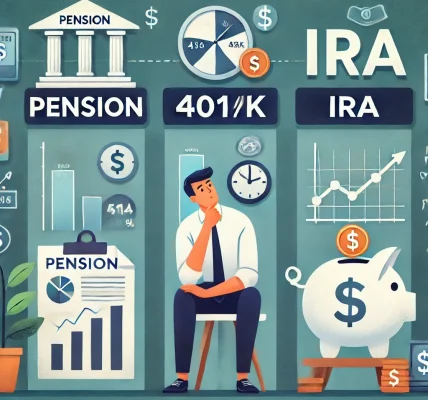Introduction
As you approach retirement, one of the biggest financial and lifestyle decisions you’ll face is whether to downsize your home. Many retirees consider moving to a smaller, more manageable property to reduce expenses, free up equity, and enjoy a simpler lifestyle. However, downsizing isn’t a one-size-fits-all solution. It’s essential to weigh the benefits and drawbacks before making a decision that impacts your financial security and overall well-being.
In this article, we’ll explore the key factors to consider when deciding whether downsizing is the right move for your retirement lifestyle.
Benefits of Downsizing in Retirement
1. Financial Savings
One of the most compelling reasons to downsize is the potential for financial savings. A smaller home often comes with:
- Lower mortgage or rent payments (if applicable)
- Reduced property taxes
- Decreased maintenance costs
- Lower utility bills
- Fewer home insurance expenses
By cutting these costs, you can free up more funds for travel, hobbies, healthcare, or other retirement activities.
2. Increased Cash Flow and Retirement Funds
Selling a larger home and purchasing a smaller one can provide a significant boost to your retirement savings. The equity released from the sale can be used for:
- Supplementing your retirement income
- Investing in safer financial instruments for long-term stability
- Creating an emergency fund to cover unexpected medical expenses
- Helping children or grandchildren with their education
3. Easier Maintenance and Accessibility
A smaller home is generally easier to maintain, requiring less time and effort for cleaning, repairs, and yard work. Many retirees also look for single-story homes to avoid staircases, which can become a challenge as they age. A well-designed, accessible home can enhance comfort and reduce the risk of falls and injuries.
4. Opportunity to Relocate to a Better Location
Downsizing can give you the flexibility to move to a location that better suits your retirement lifestyle. You may consider:
- Moving closer to family and friends
- Relocating to a warmer climate
- Choosing a community with senior-friendly amenities
- Living in a retirement-friendly state with lower taxes and better healthcare facilities
5. Simplified Lifestyle and Less Clutter
Over the years, many homeowners accumulate possessions that may no longer serve a purpose. Downsizing encourages a simpler, clutter-free lifestyle, reducing stress and making it easier to focus on what truly matters in retirement.
Potential Drawbacks of Downsizing
1. Emotional Attachment to Your Home
Your home is likely filled with cherished memories, making it emotionally challenging to leave. Downsizing may feel like giving up a part of your history, which can be difficult for some retirees.
2. Moving Costs and Hidden Expenses
While downsizing can save money in the long run, moving itself comes with upfront costs, such as:
- Real estate agent fees
- Closing costs and property transfer taxes
- Moving expenses
- Home renovations or modifications for the new property
- HOA fees (if applicable in a retirement community)
3. Less Space for Guests and Family
A smaller home may mean less space for hosting family gatherings, accommodating visiting grandchildren, or pursuing hobbies that require extra room. If entertaining is an essential part of your lifestyle, consider whether a downsized home will still meet your needs.
4. Housing Market and Economic Conditions
The financial benefits of downsizing depend on the real estate market. Selling during a downturn might not yield as much profit as expected. Additionally, the cost of buying a smaller home or renting in a desirable area may be higher than anticipated.
5. Potential Lifestyle Adjustments
A major move can lead to lifestyle adjustments. For example, relocating to a new city or state might mean rebuilding social connections, adapting to a different climate, or getting used to a new healthcare system.
How to Decide If Downsizing Is Right for You
Step 1: Assess Your Current and Future Needs
Consider your long-term plans, including:
- Health conditions that may affect mobility
- Social connections and community involvement
- Travel goals and lifestyle preferences
- Estate planning and legacy goals
Step 2: Calculate the Financial Impact
Work with a financial advisor to assess:
- How much equity you would gain from selling your home
- The affordability of alternative housing options
- The tax implications of selling and buying a new property
- Your overall retirement budget and expected expenses
Step 3: Research New Living Arrangements
Explore different housing options that align with your needs, such as:
- Smaller single-family homes
- Condos or townhouses (less maintenance required)
- 55+ retirement communities (social and recreational benefits)
- Renting instead of owning (flexibility without long-term commitment)
Step 4: Test the Downsized Lifestyle
Before making a permanent move, consider:
- Renting a smaller space for a short period to see if you enjoy the lifestyle
- Decluttering your current home to get used to having fewer possessions
- Visiting potential retirement communities to experience the environment firsthand
Conclusion
Downsizing can be a strategic move for retirees looking to enhance their financial security, simplify their lifestyle, and increase flexibility. However, it’s not the right choice for everyone. The decision should be based on personal preferences, financial considerations, and long-term goals.
By carefully evaluating the pros and cons, planning for potential challenges, and seeking professional advice, you can determine whether downsizing will truly support a better retirement lifestyle. Ultimately, the goal is to create a comfortable and fulfilling retirement that aligns with your dreams and financial well-being.



